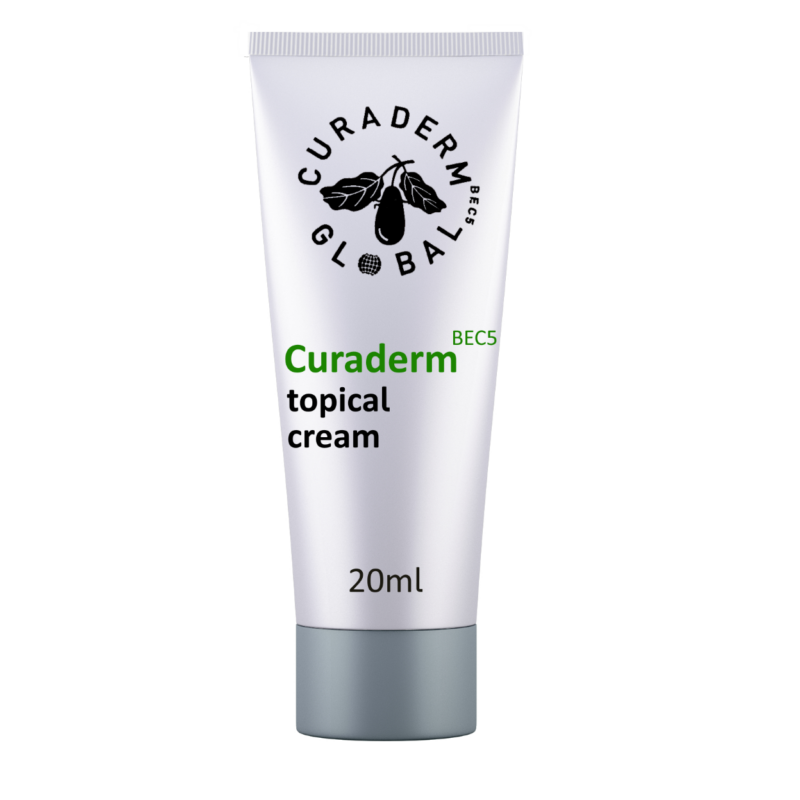BEC5 Curaderm Cream – How Does It Work?
In the U.S. alone, around 3.3 million people are diagnosed with skin cancer – with 8/10 being basal cell cancers[1]. This number has been rising at a startling rate over the years, but why? Well, one of the leading causes of basal skin cancer is sun exposure, which can cause significant damage to our skin.
Even with the best of intentions, it’s easy to forget or neglect to apply sunscreen when we’re out in the sun. This can easily lead to sun-damaged skin and an increased risk of skin cancer over time. If you have sun-damaged skin or basal cell cancer, you don’t have to suffer alone. Alongside the guidance of your healthcare provider, natural at-home treatments are available. One such treatment is BEC5 Curaderm cream.
But what is BEC5® Curaderm cream, and how can it help basal cell cancer or sun-damaged skin?
What Is BEC5® Curaderm Cream?
Back in the 1970s, some Australian cattle farmers faced a problem with their cows. Many of their animals were suffering from tumors on their nose and mouth. One day, the farmers noticed their cattle rubbing their faces against a plant called ‘the devil’s apple.’ A member of the nightshade family, the devil’s apple seemed to reduce the tumors on the cow’s faces significantly.
This information led biochemist Dr. Bill E Cham to investigate and eventually create BEC5 Curaderm cream. The development of the cream was a result of Dr. Cham’s research into eggplant extracts (also a member of the nightshade family) and their effect on certain types of skin cancers.
BEC5® Curaderm cream contains solasodine glycosides (BEC5) extracted from eggplants and is proven effective in treating non-melanoma skin cancers. But while BEC5® Curaderm cream is a natural alternative to treating the above skin issues, you should always seek medical advice if you or a loved one have any health concerns.
How Does BEC5 Curaderm Cream Work?
When applied to the affected area, BEC5® Curaderm cream targets and destroys only abnormal cells while leaving healthy cells unharmed – unlike conventional treatments such as surgery. The cream is applied directly to the treatment and breaks down cancerous cells from the inside out. This helps to prevent any further growth or spreading across the body.
In addition to destroying basal skin cancer cells, BEC5® Curaderm cream can help soothe the skin, prevent scarring, and even promote healing in some cases. Clinical trials have shown BEC5® Curaderm cream to be safe and effective for treating non-melanoma skin cancers and sun-related damage, such as actinic keratosis[2].
BEC5 Curaderm cream contains the following ingredients:
- Solasodine Glycosides (BEC5): extracted from eggplant, it is a natural ingredient that breaks down abnormal cells on contact.
- Urea: an organic moisturizer that helps the BEC5 penetrate deeper into the skin.
- Salicylic Acid: this beta-hydroxy acid helps to exfoliate the skin, remove dead skin cells, and reduce inflammation.
The ingredients in BEC5® Curaderm cream are the key to its success in treating skin cancers and sun damage. Although, it’s important to note that you should always consult your doctor before using BEC5® Curaderm cream to ensure it is the right choice for you.
Conclusion
BEC5® Curaderm cream is a natural and low-risk option for treating non-melanoma skin cancer or sun-damaged skin at home. For many people – particularly those with basal cell cancer – this could be the answer they are looking for. BEC5® Curaderm cream offers an effective, safe, and affordable treatment that is backed by science.
If you’re considering using BEC5® Curaderm cream, make sure you speak with your GP and get their approval before purchasing. If you have the green light from your doctor, then be sure to click through to the BEC5 product on our website for more information on this revolutionary cream.
BEC5® Curaderm cream product information: https://www.antiaging-systems.com/products/curaderm-bec5/
References:
